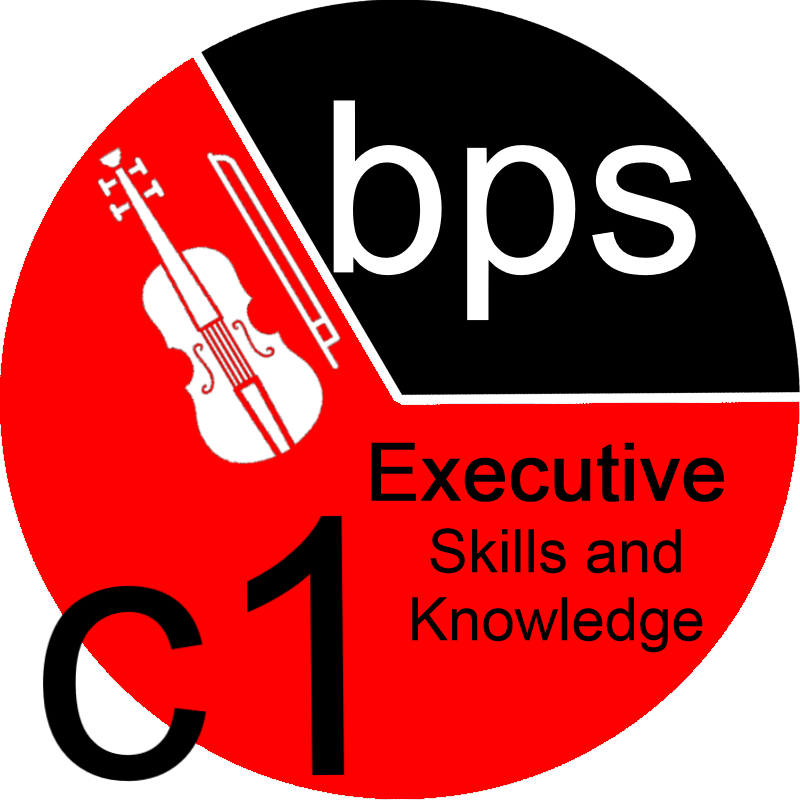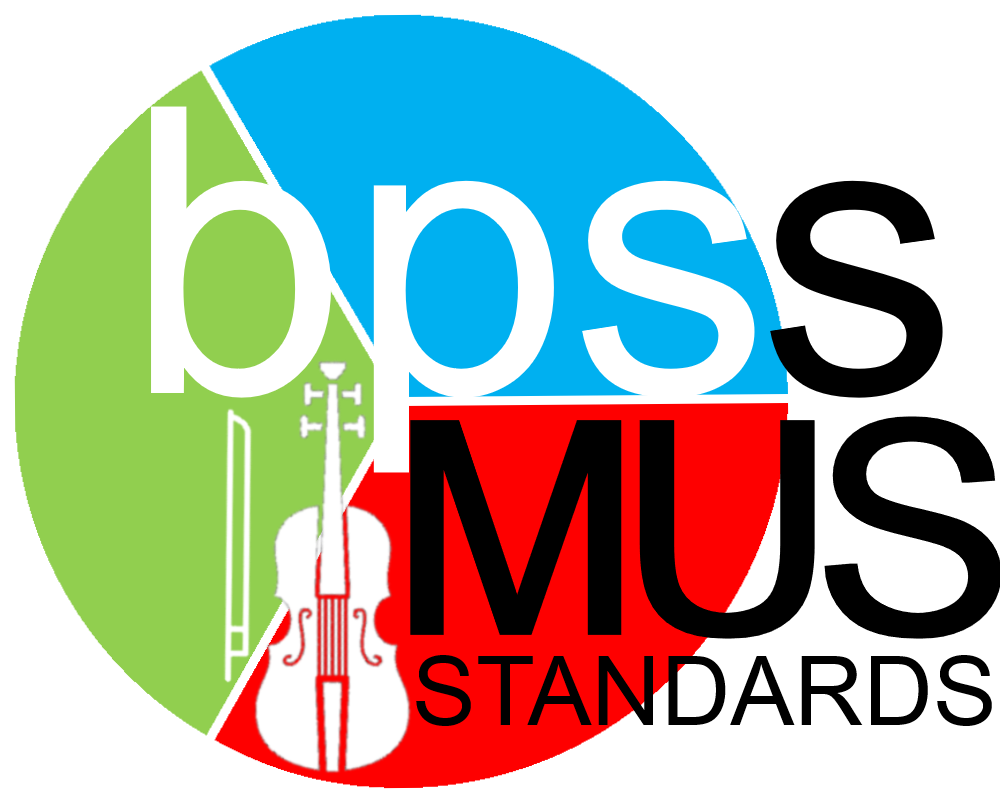MUS-HS.c1
High School String Standards
Category 1: Executive Skills and Knowledge
MUS-HS.c1 The technical skills and understanding required to physically perform on the instrument, such as body format, bowing, etc.
Calculations
Categories are larger groups of related standards. So the Category grade is a calculation of all the related Standards listed below:
Standards
MUS-HS.c1.A
Body FormatStudents establish a lengthened and balanced posture; support instrument without tension, demonstrate ease of motion; format is adjusted for physiological changes due to growth; control of weight distribution, unilateral movement, bilateral movement, in sitting and standing position.
MUS-HS.c1.B
Left Hand
Students perform with correct address and angle of left arm-wrist-hand-finger to instrument, that is balanced and free of tension; independence of fingers; ease of motion and control of finger weight; produces characteristic tone, with vibrato (as appropriate); shows understanding and ability to apply fingerings, finger patterns, shifting, extensions.
MUS-HS.c1.C
Right HandStudents perform with fluent bowing motion, control of variables (weight, angle, speed, and placement), in a variety of bowing techniques and articulations, with characteristic tone.
|
|
MUS-HS.c1.A 
(MUS) Category 1: Executive Skills and Knowledge
MUS-HS.c1.A Body Format Students establish a lengthened and balanced posture; support instrument without tension, demonstrate ease of motion; format is adjusted for physiological changes due to growth; control of weight distribution, unilateral movement, bilateral movement, in sitting and standing position.
Learning Targets
Paste content from Workdone
Proficiency Scale
The student can ...
1 Beginning... with help, demonstrates a partial understanding of some of the simpler details and processes (Score 2.0 content) and some of the more complex ideas and processes (Score 3.0 content).
Start
2 Developing... demonstrates no major errors or omissions regarding the simpler details and processes but exhibits major errors or omissions regarding the more complex ideas and processes (Score 3.0 content).
Simple
3 Proficient“The Standard.”
... demonstrates no major errors or omissions regarding any of the information and processes that were end of instruction expectations.
Target
4 Advanced... demonstrates in-depth inferences and applications regarding more complex material that go beyond end of instruction expectations.
Complex
|
|
MUS-HS.c2
High School String Standards
Category 2: Musicianship Skills and Knowledge
MUS-HS.c2 The elements such as understanding of rhythms, aural skills, note-reading skills, etc., that relate to musical understandings.
Calculations
Categories are larger groups of related standards. So the Category grade is a calculation of all the related Standards listed below:
Standards
MUS-HS.c2.A
Tonal Aural Skills and Ear Training
Students demonstrate the following abilities: matching and manipulating pitch, playing with a sense of tonality, tonal-melodic and tonal-harmonic function (horizontal and vertical relationships/functions of tonality), ear-to-hand skills, aural and kinesthetic awareness of pitch accuracy and intonation, including and related to improvisation.
MUS-HS.c2.B
Rhythmic Aural Skills and Ear Training
Students perform simple and complex rhythmic patterns/functions, with steady pulse/beat, correct sense of meter, metric organization and phrasing, in a variety of meters.
MUS-HS.c2.C
Creative Musicianship
Students demonstrate creative musicianship skills at all stages of development, including the ability to improvise variations of rhythmic, melodic, and harmonic patterns, within the traditions and standards of a variety of genres and practices; arrange and compose melodies and harmonies according to specific criteria and guidelines.
MUS-HS.c2.D
Music Literacy
Students demonstrate sequential music literacy {decoding and comprehension), defined as association of sound to symbol, in a given musical context, which includes: predictive components, knowledge of symbols and notation related to pitch, rhythm, dynamics, tonality, clef, articulation, etc.), based on the principle that sound comes before sight.
MUS-HS.c2.E
Ensemble Skills
Students perform in an ensemble, demonstrating sensitivity and the ability to adjust and maintain a uniform sense of rhythm, tempo, articulation, tone, blend, balance, and dynamics; understand conducting gestures, follow conductor and section leader, and are able to synchronize bowings.
|
|
MUS-HS.c3
High School String Standards
Category 3: Artistic Skills and Knowledge
MUS-HS.c3 The elements that relate to the creative and expressive side of music-making, beyond mere performance, such as improvisation, performance with artistic understanding, etc.
Calculations
Categories are larger groups of related standards. So the Category grade is a calculation of all the related Standards listed below:
Standards
MUS-HS.c3.A
Expressive Element
Students employ expressive elements of music to communicate abstract thoughts, ideas, and meaning; to share the depth of the human experience; and for self-expression and understanding.
MUS-HS.c3.B
Historical and Cultural Elements
Students perform music from a wide range of genres in a culturally authentic manner, reflecting the diverse nature of people, groups, and cultures found across the world and in the U.S.; performances demonstrate an understanding of historical and
cultural contexts, and reflect stylistic traditions and practice.
MUS-HS.c3.C
Evaluation of Music and Musical Performance
Students evaluate and analyze music for executive skill, musicianship, and artistic considerations; evaluate and analyze the musical performances of themselves and others based on established criteria.
|
|





